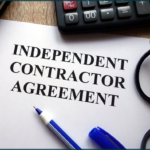Security and value – win/win objectives sought by both sellers and buyers in negotiating supplier documents. Where pursuit of these objectives is sincere, one finds healthy supplier/purchaser relationships. Long-term profitability more often follows. This is rarely more apparent than in this week’s business news. Pharma leader Eli Lilly was reportedly just hit with a $6 billion judgment. But, as a result of a well-drafted indemnity provision, it appears that Eli Lilly will not bear the brunt of this judgment’s burden. Conversely, automotive giant GM’s reportedly hostile history with suppliers has apparently contributed to its failed ignition switch recall. News reports state that overly aggressive cost-cutting by its purchasing teams contributed to this P.R. nightmare. You be the judge, but which industry has suffered the most in its valuations this past decade, the automotive or pharma industry?
While price and delivery deadlines are indeed critical negotiation starting points, much more needs to be documented. An old-fashioned purchase form alone rarely suffices today.
There are many more issues suppliers and purchasers must prepare to address in their negotiations. First, risk management must be a central part of these discussions. A few of the many conditions suppliers and purchasers often fail to resolve are:
- What are the parties’ liability dollar limits and liability allocations in the event of a product recall?
- Who is responsible for the product’s design and related liability?
- Will any dispute be resolved in the seller’s or buyer’s home state, or neutral arbitration forum?
- If one of the parties is sold, will the contract assign automatically?
- What are the scopes and time limits of the desired warranties?
- Where does insurance risk shift for the goods during transportation?
- If the relationship sours, how can it be wound down?
- What happens if a supplier faces a natural disaster, such as an earthquake?
- Who pays to warehouse the goods when efficiency is obtained by a supplier producing on long runs?
- What happens when raw material prices spike due to shortages?
- Are there rebate incentives if certain sales volumes are achieved?
- When are the post-delivery inspection deadlines to report obvious defects?
The valuable security of a carefully-drafted supply agreement indeed costs up front in time and legal fees. However, compared to the costs manufacturers pay for insurance, such expenses are relatively cheap. The expertise for properly preparing this supply documentation is the craft of a well-tuned purchasing/sales manager and attorney team. Just as a functional machine’s specs needs to be drawn by an engineer, a functional supply contract needs to be drawn by an attorney. When this documentation is correctly negotiated, both purchaser and supplier win and substantial value comes to both parties. Supplier liability prevention starts with a solid contract, not an insurance policy blanketed in coverage exceptions. Just ask Eli Lilly or GM.
For additional information, please contact attorney Mike Schopmeyer at mschopmeyer@KDDK.com or (812) 423-3183, or contact any member of the KDDK Business Law Practice Team.
About the Author

Mike Schopmeyer, a Co-Managing Partner at Kahn, Dees, Donovan & Kahn, LLP (KDDK), in Evansville, Indiana, has more than 30 years’ experience closing and resolving business, environmental, construction, real estate, and intellectual property deals and disputes. He has extensive experience in economic development law as well as government, school and municipal law. Honed from service as a private practitioner, government attorney, arbitrator, and civic leader, Mike’s financial acumen empowers clients to more swiftly reach durable solutions.




